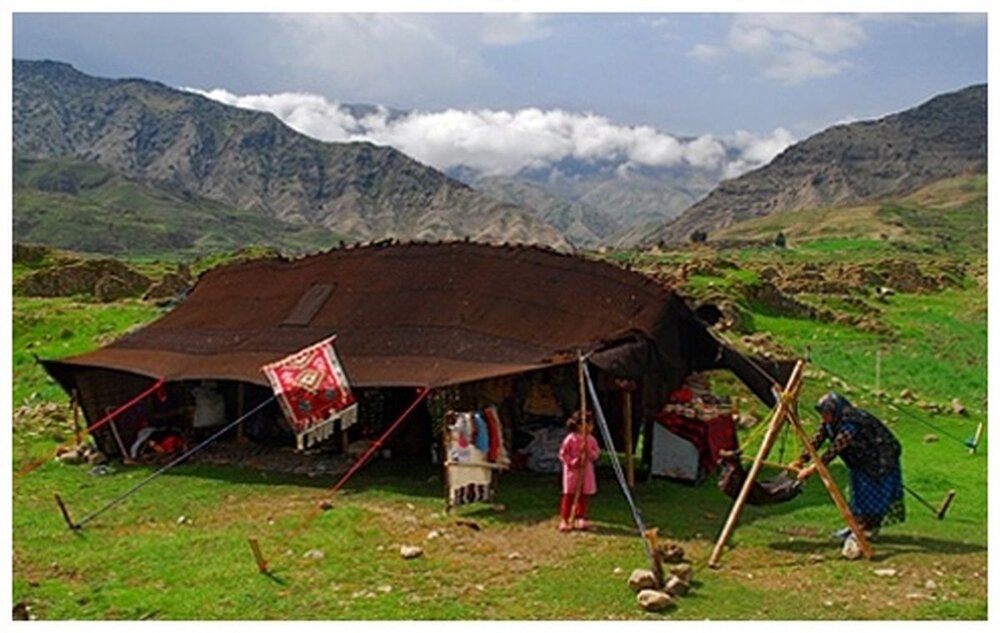Nomadic art of giant tents revived in Kohgiluyeh and Boyer-Ahmad

TEHRAN - The nomadic art of making Siah-Chador (giant “black tents”), which was once on the verge of oblivion in Kohgiluyeh and Boyer-Ahmad, has been revived in various counties of the western Iranian province.
“15 handicraft workshops, dedicated to the art of making Siah-Chador, have been organized to revive the ancient art in various parts of the province,” the provincial tourism chief said on Tuesday.
“Apart from being used for nomadic life, Siah-Chador is also used for tribal tourism and festivals,” Majid Safaei said.
The black tents are usually woven by women from the hair of black goats, which don’t let water pass through and are available, cheap, light, and easy to collect and carry. Men are responsible for setting up the tents and nomads usually live and rest under these black tents in summers and winters.
Sightseers may live with a nomadic or rural family for a while or enjoy an independent stay.Experts say that the Revival of this field of handicraft will contribute to the prosperity of the nomadic economy, as well as generate job opportunities.
The lesser-known province is home to various nomads and is a top destination for those interested in visiting in person the nomadic life. Sightseers may live with a nomadic or rural family for a while or enjoy an independent stay and assist them with day-to-day life. It also opens up an opportunity to feel rustic routines, their agriculture, traditions, arts, and culture.
Many tourists from all over the world tend to observe the lifestyle of these hardworking people and spend a few days watching activities such as milking, yogurt making, buttering, oiling, woolen, carpeting, and much more. Many Iranian and foreign tourists are interested in sleeping in nomadic black tents.
The varied natural setting of the country never disappoints visitors when it comes to tribal tourism as the culturally diverse country is home to many regional people including ones with Turk and Arab elements in addition to the Kurds, Baloch, Bakhtyari, Lurs, and other smaller minorities such as Armenians, Assyrians, Jews, and others.
Language, music, indigenous cuisine, clothing, songs, anecdotes, crafts, live performances, and local rituals such as celebrations and wedding ceremonies have always spurred many to experience life among the tribes.
AFM
